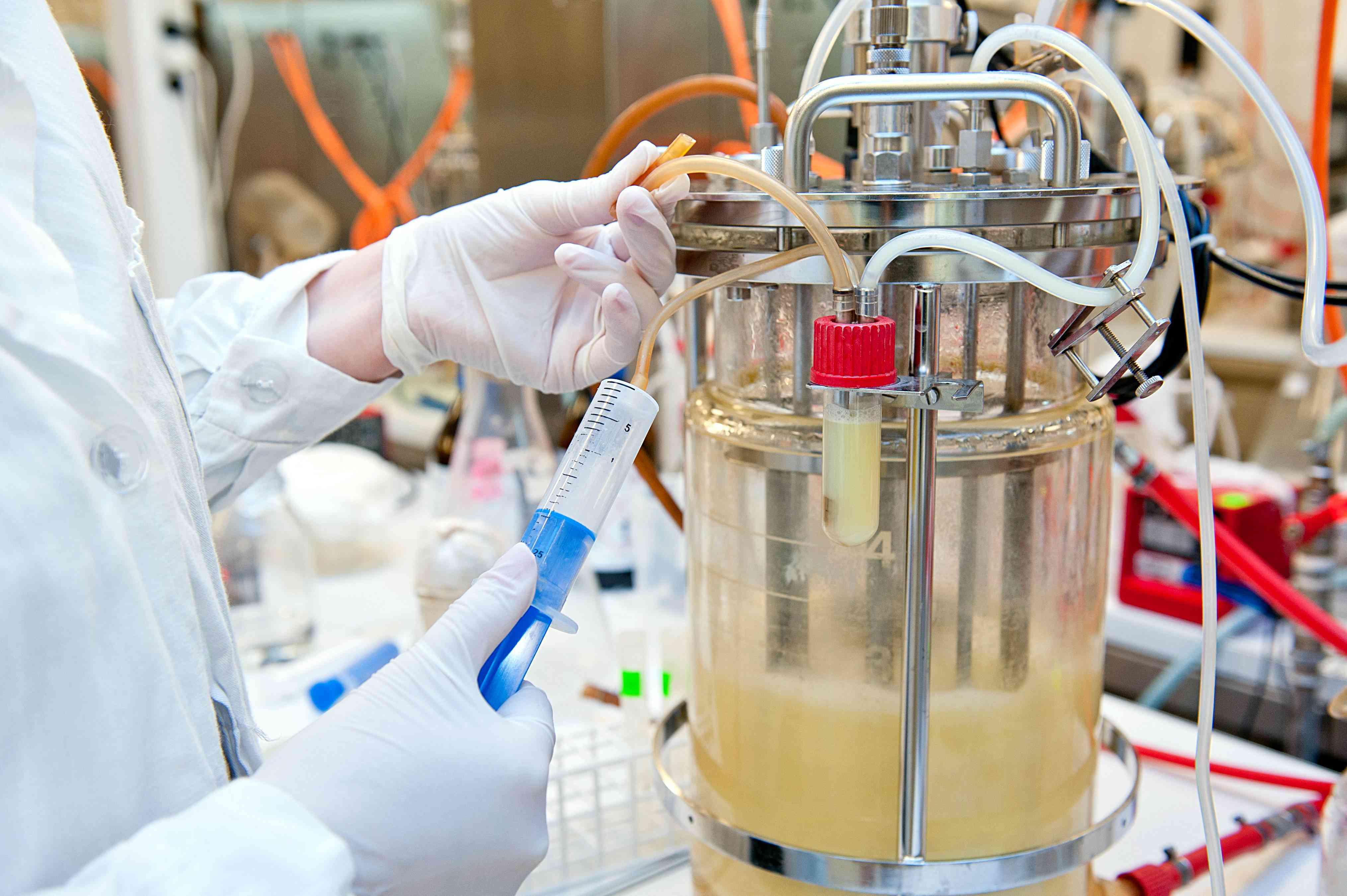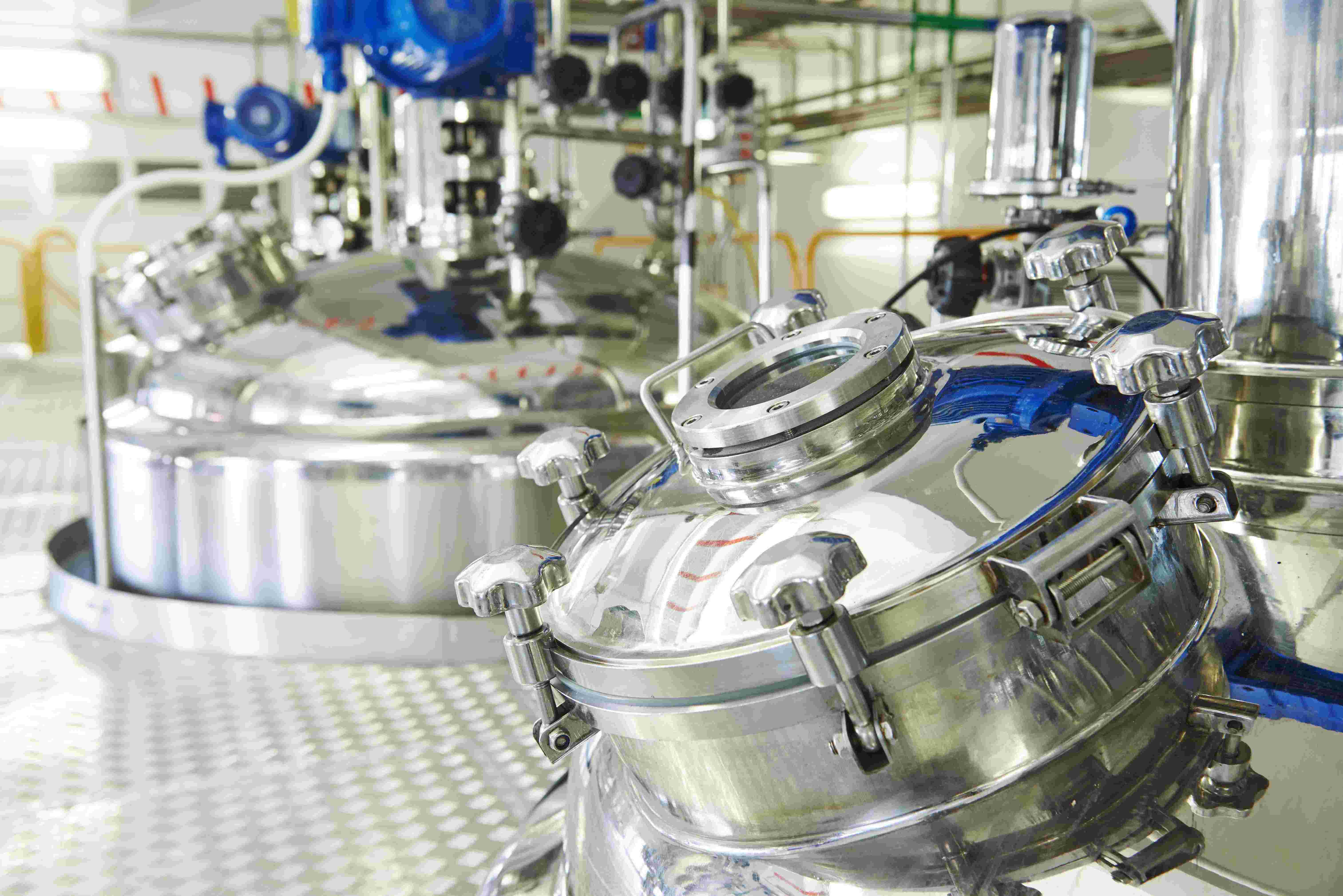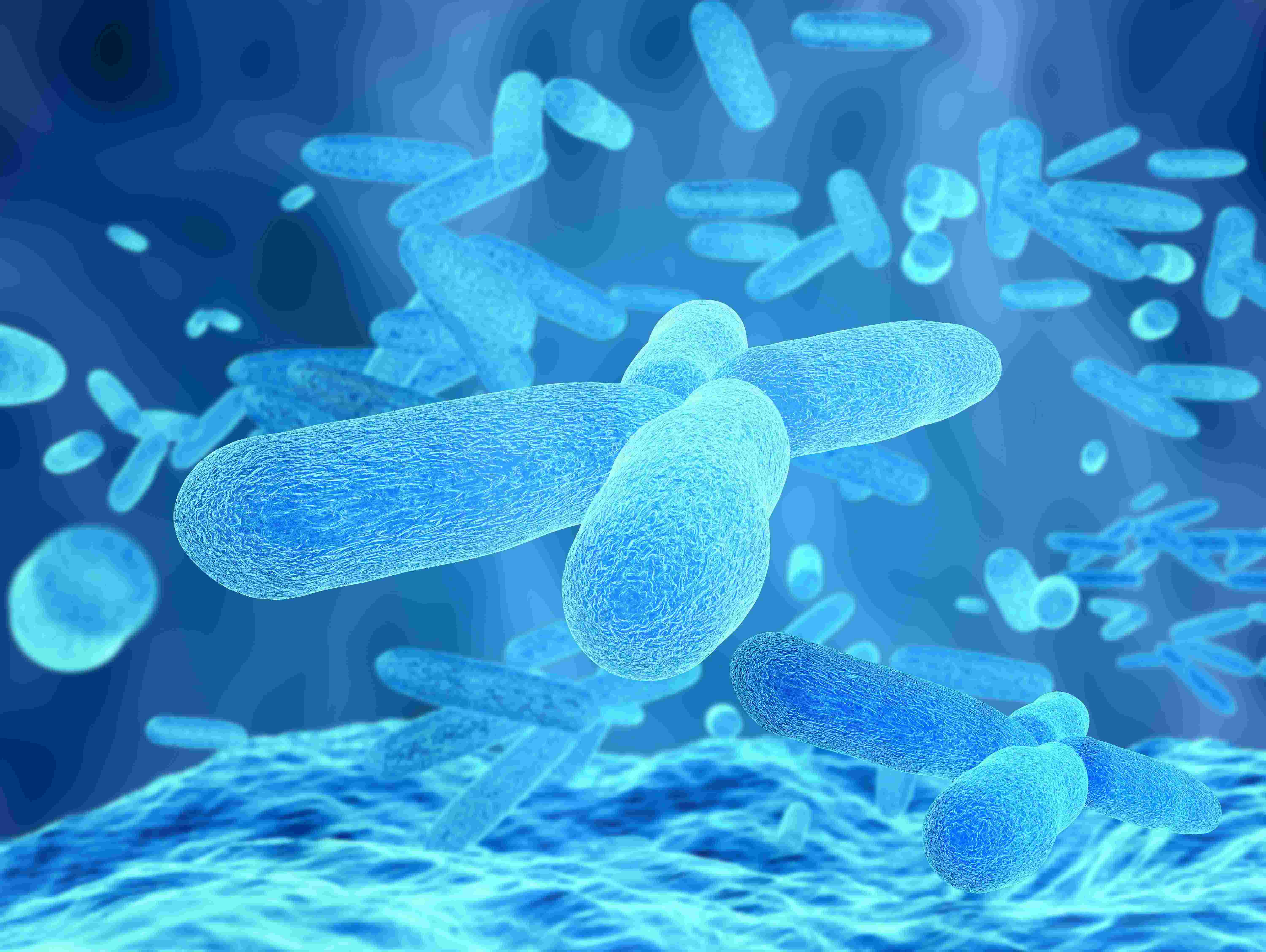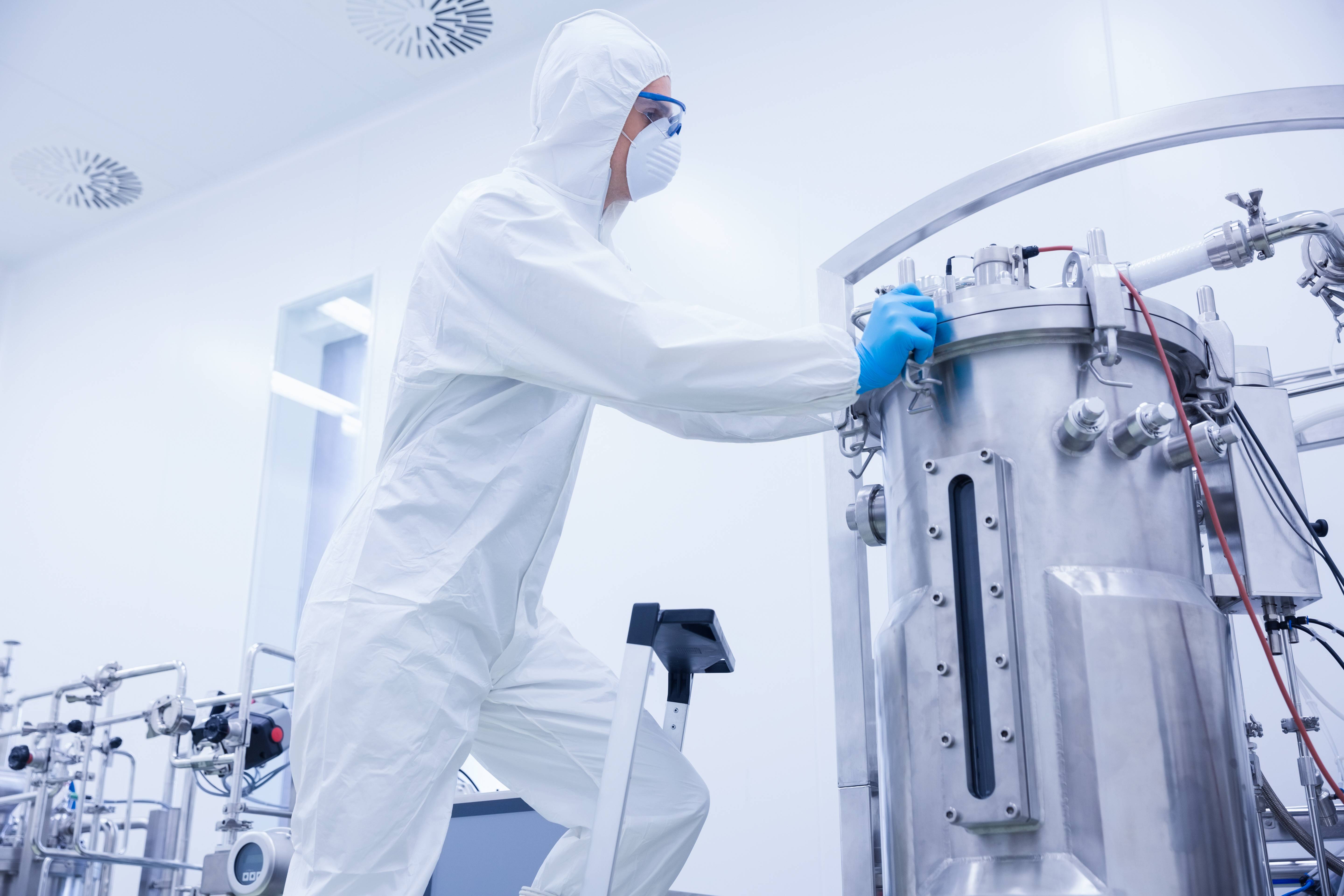Fermenter/Bioreactor
- Mini Glass Fermenter
- Lab and Pilot Scale Fermenter
- Pilot and Production Scale Fermenter
- Multi Stage Stainless Steel Fermenter
- Magnetic Stirring Fermenter
- Solid State Fermenter
- Enzyme Bioreactor
- Cell Culture Fermenter
- Vaccine Production Fermenter
- Inactivation Tank
- Mixing Tank Ingredients Tank
- Airlift Fermenter
- Spray Dryer
- Glass Bioreactor
- Multistage Glass Fermenter
- Light(photo) Fermenter
- Centrifuge
- blog
General Info
In bioprocessing, “inactive” means cells that have been intentionally killed or inactivated at the end of fermentation. In this case, inactivation is a critical control point. Unlike dormant cells that may just be in a low activity state due to stress or nutrient depletion, inactive cells in bioprocessing means cells that have completely stopped biological activity as a final step. This is important for product quality and safety of bioproducts like vaccines, enzymes and therapeutic proteins.

Knowing the purpose and method of inactivation is key in bioprocessing as this is the end of cell proliferation and production. Making sure no active cells are in the final product is critical to prevent unintended contamination or spoilage.
The Role of Cell Inactivation in Bioprocesses
Inactivation (or rendering cells inactive) is important for product stability.
In many biotech applications, such as vaccine production or pharmaceutical manufacturing, leaving live cells in the product can cause contamination risks, adverse reactions, and compromised efficacy. For example, in vaccine development, inactivation ensures no live pathogens are present, which could otherwise trigger unwanted immune responses.
The final inactivation is also necessary for:
● Consistency: Uniform inactivation across the culture to prevent product variability.
● Safety: Products with live cells may be regulated and unsafe.
● Product Integrity: Active cells will consume nutrients and produce byproducts that can degrade the final product.
What are the Causes of Inactive Cells in Bioprocessing?
Understanding the reasons behind cell inactivation helps you fine-tune your bioprocess for the best results. Cell inactivation can be a natural part of the bioprocess lifecycle or an induced event for specific applications. Here are the main causes of cell inactivation in bioprocessing:

● Cause 1 - Nutrient Depletion: Cells need a constant supply of nutrients to keep metabolism going. When glucose, amino acids or oxygen become limited, cells will start to inactivate. In commercial scale bioreactors, nutrient limitation is a common way to slow down cell growth when nearing the end of production, especially for products sensitive to overgrowth or high cell density.
● Cause 2 - Toxic Byproducts build up: Cells produce various metabolic byproducts during growth and production. In high-density cultures, the build-up of waste products like lactic acid or ethanol can create a toxic environment. As these byproducts increase, they create an environment not suitable for cell survival and inactivation.
● Cause 3 - Environmental Stress: Environmental factors like pH, temperature, and oxygen levels directly impact cell viability. Deviation from optimal conditions can stress cells reduce their metabolic activity and eventually inactivate them. Controlled stress factors are sometimes used intentionally in bioreactors to inactivate cells without compromising the product.
● Cause 4 - Targeted Chemical or Thermal Treatment: In some cases, targeted treatments like heat or chemicals (e.g. formaldehyde or sodium hydroxide) are used to inactivate completely. This is common in vaccine production where pathogens need to be fully inactivated to be safe without damaging the antigenic components required for efficacy.
By knowing these factors, bioprocess engineers can design controlled inactivation processes, improve consistency, safety and quality. Each of these methods are useful in preparing cells for transition to an inactive state without compromising the product.
What are Different Cell Inactivation Techniques in Bioreactors?

In industrial bioprocessing, controlled cell inactivation is often required to get the desired product characteristics safety and stability. Here are the techniques used to inactivate cells effectively in bioreactor systems:
1). Temperature Inactivation
Raising the temperature in a bioreactor is the simplest way to inactivate cells.
High temperatures denature proteins and enzymes, causing loss of function and structural damage. This method is used in processes where temperature control is possible, like thermostable enzymes or certain vaccine products. Temperature inactivation is widely used because of its simplicity but needs to be managed carefully to not damage sensitive bioproducts.
2). Chemical Additives for Inactivation
Chemicals like formaldehyde, alcohols, or hydrogen peroxide are sometimes added to inactivate cells. These chemicals break the cellular membrane and denature proteins, stopping cell activity. This is used in vaccine production, where pathogens need to be inactivated to be safe while preserving the immunogenic properties of viral or bacterial components. Chemical inactivation requires a balance to not have unwanted chemical residues in the final product, so it’s used primarily for applications with extensive purification processes.
3). pH Adjustment
Adjusting the pH in a bioreactor can create an environment that is not suitable for active cells. Extreme pH changes affect enzyme stability and membrane integrity, inactivates cells. This is used in microbial bioprocessing where bacteria and fungi are more pH sensitive. But maintaining the right pH balance is crucial to not damage the final product or production medium.
4). Oxygen Limitation and Anaerobic Conditions
For some cell types, reducing oxygen in a bioreactor can inactivate cells. Cells like aerobic bacteria and mammalian cells need oxygen for their metabolic functions so reducing oxygen supply or creating anaerobic condition induces metabolic stress and leads to inactivation. This is controlled and effective but used only in specific applications as it requires highly regulated oxygen input system.
5). Pressure and Shear Stress
Pressure and shear stress in a bioreactor can also inactivate cells. High pressure systems or increased agitation rate can damage cellular structures especially for delicate cell types like mammalian cells. This is less common but useful for applications where cell viability needs to be controlled finely.
These methods allow manufacturers to get precise level of cell inactivation while maintaining product quality. By choosing the right method based on cell type and product requirements, bioprocess engineers can optimize inactivation process to be safe, reduce contamination risk and stable in biotech applications.
What is Cell Inactivation Impact on Product Quality?
Cell inactivation is important not only for safety but also for the final bioproduct to meet the quality requirements. Depending on the product being produced — inactivation can have a direct and indirect impact on the overall quality, stability, and efficacy of the product.

1). Product Integrity
In some bioprocesses, the presence of viable cells can cause degradation of the product or generation of unwanted byproducts. For example, in vaccine production, inactivation of viral particles ensures no risk of infection while preserving immunogenicity. Inactivation makes the product safe for human use while maintaining its ability to stimulate the desired immune response. For protein production, the inactivation of cells can prevent further enzymatic activity that can alter the protein or its structure so the final therapeutic product is stable and functional.
2). Reduce Contamination Risk
Inactive cells are less likely to contaminate downstream processes, so cell inactivation is critical in bioprocessing environments. For example, in pharmaceutical industry, inactivation of pathogens like bacteria or viruses prevents them from growing in culture and contaminating the batch. This ensures the final product is free from microbial contamination, a critical factor in both medical and food industry.
3). Long Term Stability
Products from bioprocesses like therapeutic proteins, vaccines, or biofuels must be stable during storage and throughout their shelf life. Inactivation plays a role in ensuring no further biological activity happens after the production phase. For example, in biopharmaceuticals, inactive cells and proteins can be stored without risk of degradation or alteration of their efficacy over time. This stability is very important for biopharmaceuticals that need to be transported and stored for a long time before use.
4). Regulatory Compliance
Regulatory bodies like FDA and EMA require validation of inactivation methods to ensure all production processes meet safety and efficacy requirements. This includes proving inactivation stops all cellular activity without affecting the quality or functionality of the final product. Balancing inactivation with product quality is often required for regulatory approval.
Conclusion: How BaiLun Biotechnology Helps Cell Inactivation in Bioreactors
BaiLun Biotechnology has bioreactor systems such as Mammalian Cell Culture Bioreactors and Industrial Bioreactor Fermenters that allow for precise control of cell activity and inactivation. Using BaiLun’s technology simplifies bioprocessing by allowing for temperature, pH and oxygen level control and shear stress and pressure manipulation. This enables manufacturers to inactivate cells while maintaining the quality of the final product.
BaiLun’s bioreactor systems serve various industries such as pharmaceutical production, biopharmaceutical development and vaccine manufacturing to meet regulatory requirements and product stability. Whether you are producing therapeutics, vaccines or industrial enzymes—BaiLun’s technology allows bioprocess engineers to optimize process and get high quality results. By using BaiLun’s bioreactors and systems, companies can not only inactivate cells but also ensure the quality, safety, and compliance of bioproducts from fermentation to delivery!
